Symbols on Veteran Shirts and Their Meanings
Learn the meanings behind common symbols on veteran shirts. Discover how military emblems, flags, and designs represent honor, courage, and patriotism.
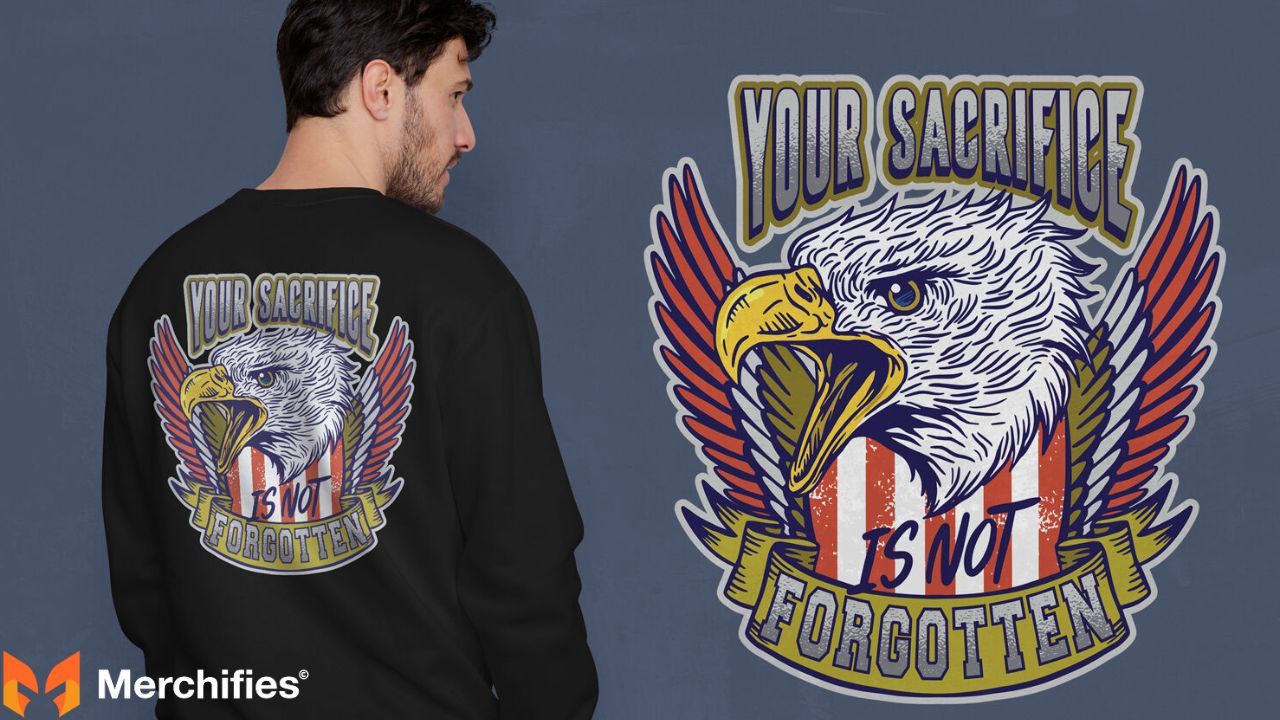
Blog Post Contents
Standing in line at the grocery store, you notice a veteran wearing a t-shirt covered in symbols. An eagle clutches arrows and an olive branch. A patch shows a screaming eagle mid-flight. Text reads "101st Airborne" and "Screaming Eagles."
What do these symbols mean? Why do veterans wear them with such pride?
This guide decodes symbols on veteran shirts and their meanings. You'll learn what the eagle represents, how to read military patches, and why these images matter in veteran culture.
Why Symbols Matter on Veteran Shirts
Military symbols aren't decorative—they're a visual language.
Every emblem represents missions completed, ranks achieved, heritage honored, and camaraderie forged. These symbols create instant recognition among service members who served decades apart.
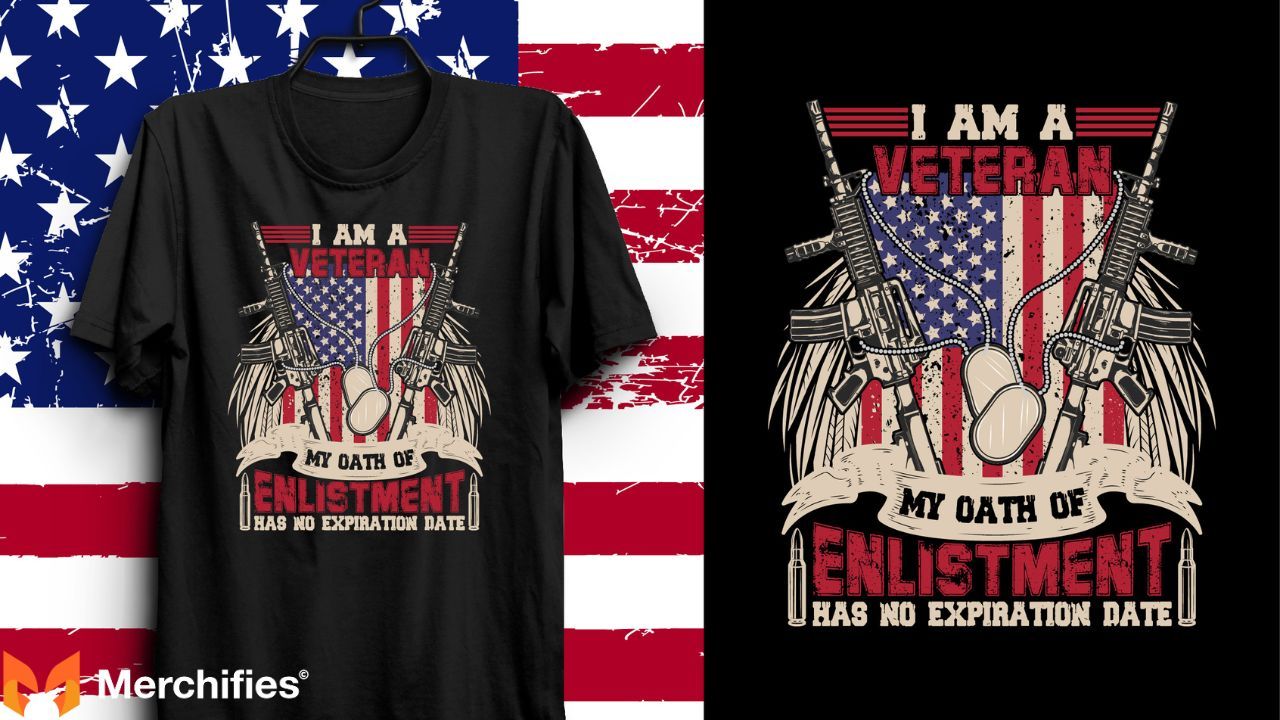
A veteran wearing an 82nd Airborne patch immediately connects with another Airborne veteran, even if they served in different wars. The symbol transcends time because it represents shared experience.
Symbols replace paragraphs of explanation. Instead of saying "I served in the Marine Corps, deployed to Iraq with 2nd Battalion 5th Marines, and earned Sergeant," a veteran wears the Eagle, Globe, and Anchor. Other Marines see it and instantly know.
Veterans wear these symbols because military service shaped who they are. That identity doesn't end with separation. The shirts bridge military past and civilian present.
When a veteran wears their unit patch, they're reconnecting with the best and worst moments of their lives. They're honoring friends who didn't make it home. They're carrying forward traditions stretching back generations.
What Does the Eagle Mean on Veteran Shirts?
The eagle soars across countless veteran shirts. This isn't just any bird—it's the bald eagle, America's national emblem since 1782.
The Bald Eagle as America's National Symbol
Benjamin Franklin wanted the turkey. He lost. The eagle won because it represented power, strength, and independence the new nation claimed.
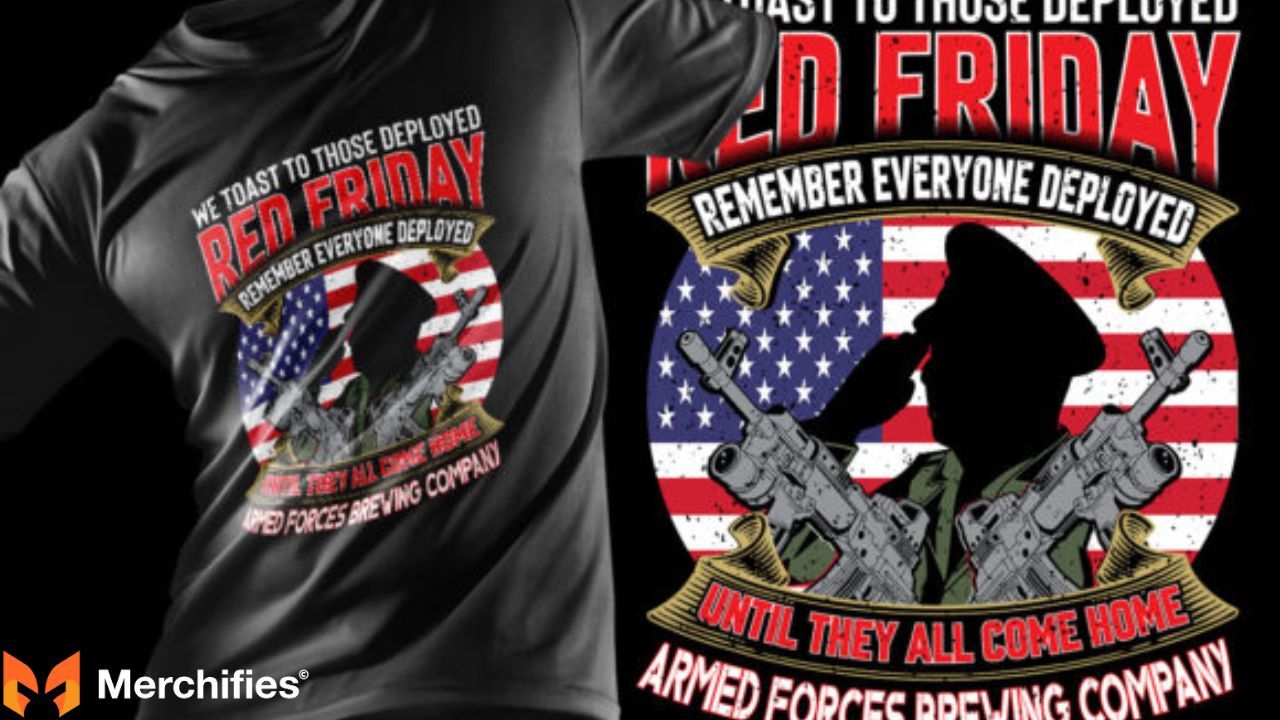
In military contexts, the eagle represents the nation veterans swore to defend. When you see an eagle on a veteran's shirt, you're looking at that oath made visible.
The bald eagle appears on military seals, insignia, patches, and emblems across all service branches. It's the one symbol uniting Army, Navy, Air Force, Marines, and Coast Guard.
Universal Eagle Meanings in Military Symbolism
What does the eagle on veteran shirts mean?
- Freedom. The eagle represents American liberty and democratic values veterans fought to preserve.
- Leadership. Eagles are apex predators dominating their domain. Military eagles represent command authority expected at every service level.
- National Pride. Wearing the eagle means representing something bigger than yourself—the United States.
- Strength and Power. The eagle's physical dominance translates to military might. Those talons gripping arrows and olive branches represent America's combat capability held in reserve.
- Vigilance. Eagles have extraordinary vision, spotting threats from miles away. Military eagles represent watchfulness and preparedness required to defend the nation.
- Aerial Superiority. Since World War I, air power has dominated modern warfare. The eagle—master of the skies—naturally represents air striking power.
When you see an eagle on a veteran's shirt, you're looking at compressed symbolism. That single image represents the nation they served, the values they defended, and the power they wielded.
Why Eagles Appear Across All Military Branches
Every branch uses eagle symbolism, but each interprets it through their specific mission. Army emphasizes strength and preparedness. Navy links eagles to maritime and naval aviation power. Air Force claims the eagle as ultimate air dominance representation.
Marines made the eagle the centerpiece of their most sacred emblem. Coast Guard eagles combine maritime tradition with homeland security missions.
The Eagle, Globe, and Anchor: Marine Corps Emblem Explained
Walk into any room of Marines and mention "the EGA." Every head turns. The Eagle, Globe, and Anchor isn't just a logo—it's the physical representation of Marine identity.
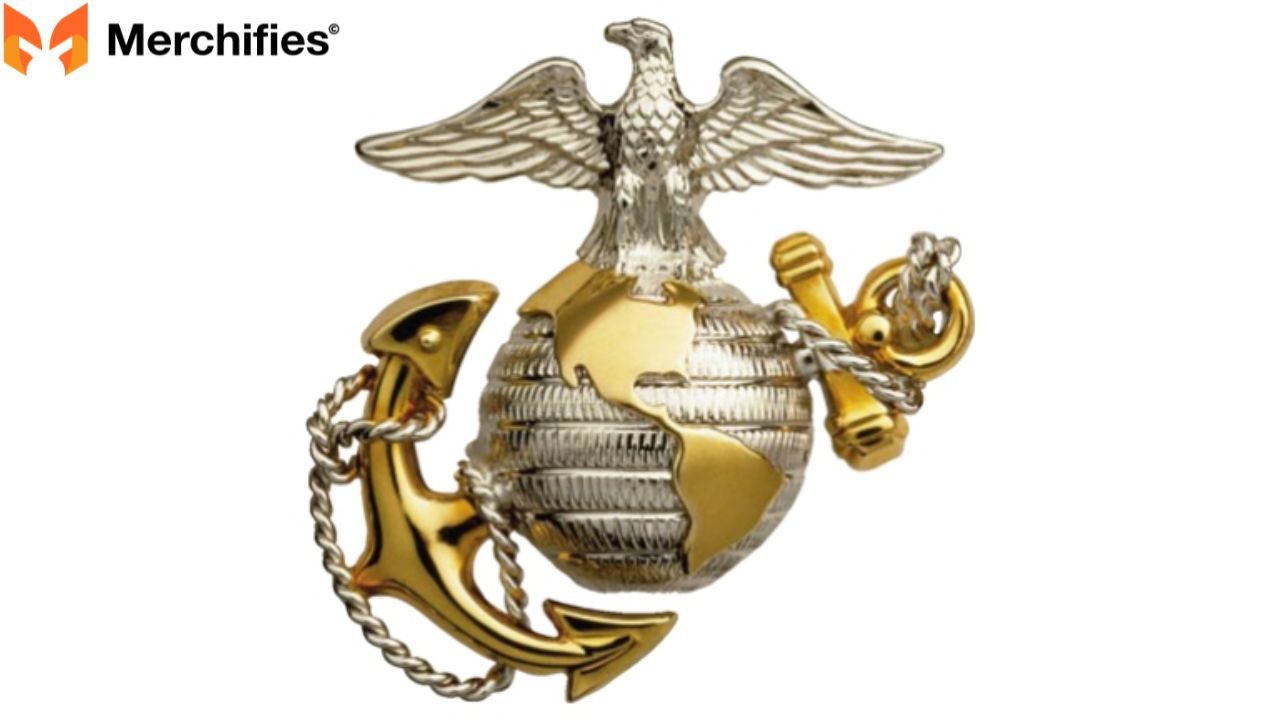
What is the EGA?
The Eagle, Globe, and Anchor has been the official Marine Corps emblem since 1868. It's the most iconic military symbol in American culture.
The emblem combines three elements. An eagle with wings spread sits atop a globe, which rests on an anchor. Scarlet and gold colors frame the design. A ribbon often bears "Semper Fidelis."
Marines call it "the EGA" with reverence. This symbol represents transformation from civilian to warrior—the moment someone becomes a Marine, a title they carry for life.
The Eagle Element
The eagle represents the United States and Marines fighting in the air domain.
Here's a detail that matters: the Marine Corps eagle faces right. This breaks traditional heraldic convention where eagles typically face left. There's no official explanation, but it creates instant visual distinction. When you see a rightward-facing eagle, you know it's Marine Corps.
That eagle represents transformation every Marine underwent. It represents the Crucible—the 54-hour final test culminating in earning the EGA. It represents when drill instructors stopped calling them "recruits" and started calling them "Marines."
Ask any Marine about receiving their EGA. Watch their posture change. That memory stays vivid decades later.
The Globe Element
The globe shows the Western Hemisphere—North and South America with latitude and longitude lines. This represents the Marine Corps' expeditionary capability and worldwide mission.
Marines have a saying: "Every clime and place." The globe embodies this global mission. Unlike Army units defending specific regions, Marines deploy worldwide as rapid-response force.
The Anchor Element
The anchor represents the Marine Corps' Department of the Navy status and naval heritage stretching to 1775.
Marines are naval infantry. They deploy on Navy ships, support naval operations, and maintain expertise in amphibious warfare—transitioning from sea to land under fire. The anchor represents this unique maritime capability.
Scarlet and Gold
Official Marine Corps colors since 1925. These aren't random choices.
Scarlet represents valor, courage, and sacrifice—the color of blood shed in service. Gold represents excellence, achievement, and honor—the standard Marines meet and exceed.
Together, they create Marine Corps visual identity.
"Semper Fidelis" and the EGA
The ribbon bears "Semper Fidelis"—Latin for "Always Faithful."
Semper Fi means faithful to the mission, fellow Marines, the nation, and Marine Corps traditions. It's a promise extending beyond active service. Once a Marine, always a Marine.
Earning the EGA
Marines earn it.
During boot camp, recruits don't wear the EGA. They haven't earned it. They endure thirteen weeks culminating in the Crucible—a 54-hour field exercise with minimal sleep, minimal food, maximum challenge.
Only after completing the Crucible do recruits receive the EGA in formal ceremony. Drill instructors present the emblem and call them "Marine" for the first time.
This earning process makes the EGA sacred. Someone wearing it without earning it isn't committing fashion faux pas—they're claiming an identity they didn't earn through the hardest experience of actual Marines' lives.
Eagle Symbols in Army Veteran Shirts
The Army uses eagle imagery extensively, focusing on national defense and dual capability.
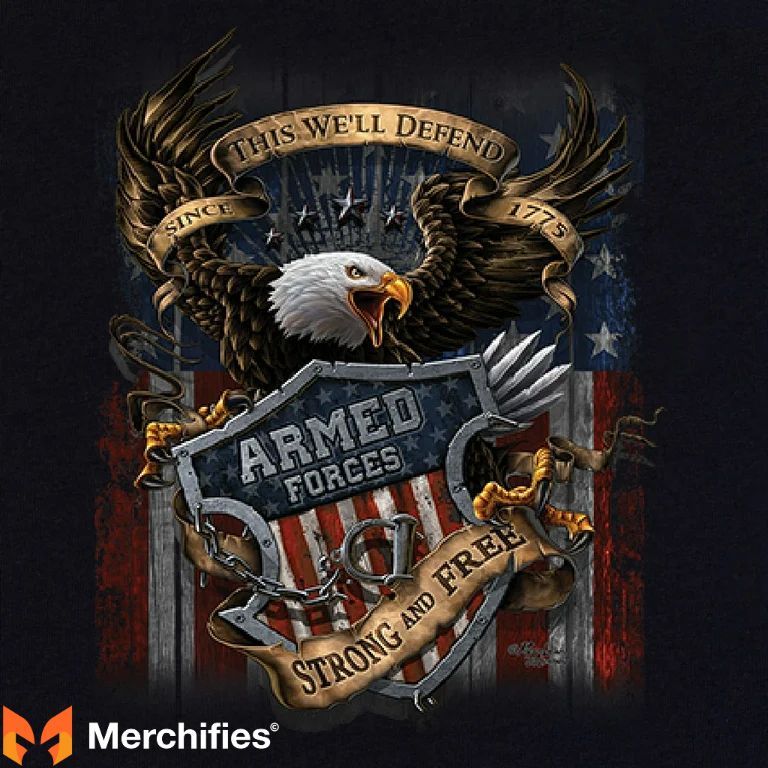
The Army Eagle and Shield
The primary Army eagle holds the U.S. coat of arms shield on its breast. The shield displays vertical red and white stripes with blue horizontal band—American flag colors in heraldic tradition.
That shield represents loyalty to the Constitution. Soldiers swear to support and defend the Constitution, not any individual. The shield makes this allegiance visible.
Army colonels wear eagles on their shoulders—earning the nickname "full bird colonel."
Arrows and Olive Branch Symbolism
Army eagles clutch arrows in the right talon, olive branch in the left.
Arrows represent wartime readiness and combat power. Multiple arrows bound together show collective strength.
Olive branch represents peacetime missions and diplomatic solutions. Even in ancient times, olive branches symbolized peace.
Together they communicate: the Army prepares for war while working toward peace.
Old Abe - The Wisconsin War Eagle
The 101st Airborne patch features an eagle's head with beak open, screaming. This honors "Old Abe"—the most famous animal mascot in American military history.
Old Abe was a real bald eagle serving with the 8th Wisconsin Volunteer Infantry during the Civil War. Named after Lincoln, he flew into 42 battles between 1861-1865. Confederates shot at him repeatedly but he survived the war.
When the Army formed the 101st Airborne in 1918, they chose an eagle patch honoring Old Abe. The Screaming Eagles fought in D-Day, Bastogne, Vietnam, Desert Storm, Iraq, and Afghanistan.
Veterans of the 101st wear Old Abe with intense pride. That eagle represents not just their service but generations before them.
Air Force and Navy Eagle Meanings
Air Force Eagle Symbolism
The Air Force eagle sits atop a shield with wings spread wide. Behind the eagle, cloud formations represent the new frontier—sky and space.
Air Force eagles emphasize air striking power and technological superiority. The wreath has six folds alternating silver and blue.
Air Force is the youngest service branch (established 1947), but they've claimed the eagle as central to their identity as America's aerospace power.
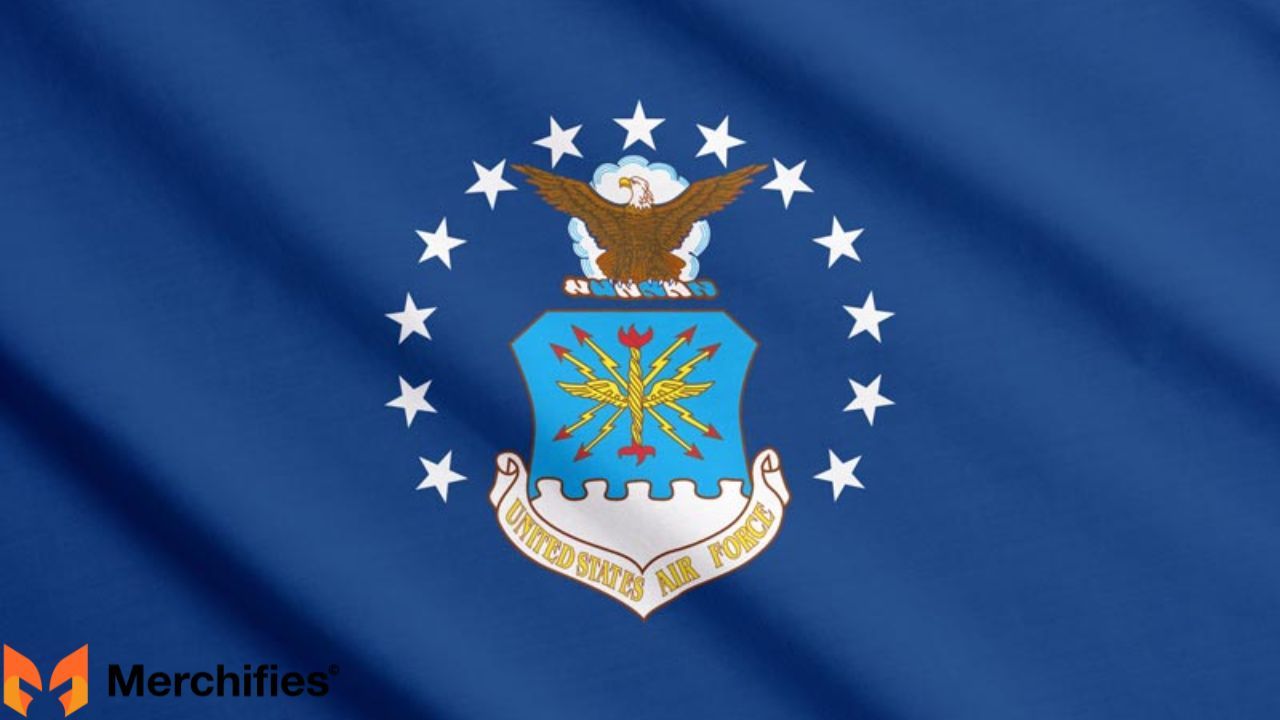
Navy Eagle Representations
Navy eagles appear on the Department of the Navy seal, naval aviation insignia, and officer rank badges.
The most visible Navy eagles are worn on Captains' shoulders (O-6 rank—equivalent to Army Colonels). These officers are called "full bird Captain."
Navy eagles represent naval aviation—carrier-based aircraft projecting American power globally.
Military Patches and Unit Symbols on Veteran Shirts
Eagles dominate, but patches tell the most specific stories.
Left Shoulder vs. Right Shoulder Patches
This distinction is critical.
Left shoulder: Current unit assignment (or last unit for veterans). This is the SSI (Shoulder Sleeve Insignia). Everyone in the same unit wears the same left shoulder patch.
Right shoulder: Combat deployment patch. Officially called SSI-FWTS (Shoulder Sleeve Insignia-Former Wartime Service). Most call them "combat patches."
A combat patch is never decorative. When you see a right shoulder patch, that person deployed to Vietnam, Gulf War, Somalia, Bosnia, Kosovo, Afghanistan, Iraq, or other combat zones. They served under hostile conditions.
The specific patch shows which unit they deployed with. Some veterans display multiple combat patches—common among post-9/11 veterans who deployed repeatedly to Iraq and Afghanistan.
Only authorized for those who spent at least 30 consecutive days in the combat zone or engaged with hostile forces.
What Unit Patches Represent
Each military unit has unique patches designed through official military heraldic process. These aren't random artistic choices—they're officially approved designs.
Unit patches typically include:
Animals representing unit characteristics (eagles for aviation/airborne, panthers for stealth, wolves for pack tactics).
Geographic features representing where the unit fought or is based (mountains, arrows, swords, shields).
Colors following heraldic traditions (red for sacrifice, blue for loyalty, gold for excellence).
Historical references connecting current unit to past achievements.
Text elements showing unit designation (division numbers, regiment names, mottos).
The 1st Infantry Division patch is a simple red "1" on olive drab—the "Big Red One." This division fought in every major American conflict since World War I.
The 82nd Airborne shows "AA" (All American). This division earned its nickname because soldiers from all 48 states served in it during World War I.
Common Animal Symbols Beyond Eagles
- Panthers and big cats: Stealth, power, jungle warfare
- Wolves: Pack mentality, teamwork, night operations
- Dragons: Armor and firepower (tank units)
- Snakes: Special operations, strike capability
- Bears: Strength, ferocity, harsh conditions
- Lions: Leadership, courage, dominance
- Bulldogs: Tenacity, refusal to quit
These animals aren't decorative. They represent how that unit saw itself and approached their mission.
Rank Insignia and Qualification Badges on Veteran Shirts
Rank Insignia Meanings
Enlisted personnel wear chevrons (V-shaped stripes). Officers wear bars, oak leaves, eagles, and stars.
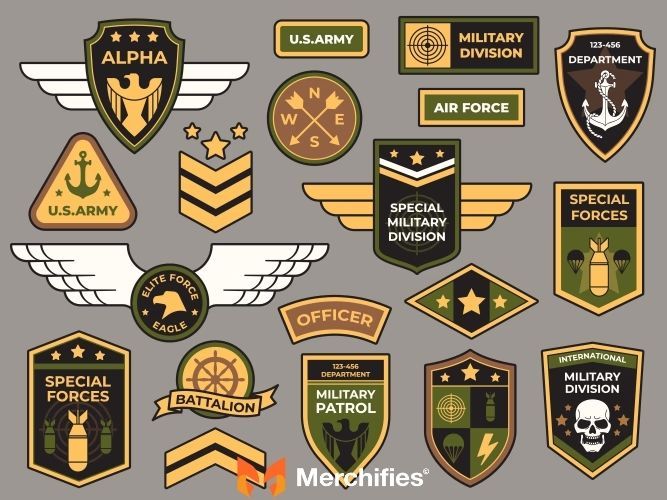
Veterans who achieved senior enlisted ranks (E-7 through E-9) often display those prominently. These represent 15-20+ years of service and extensive leadership responsibility.
The phrase "Retired [Rank]" indicates the veteran served at least 20 years to qualify for military retirement. That rank represents decades of commitment.
Qualification Badges and Their Meanings
Qualification badges represent specific skills earned through training and testing.
- Airborne wings: Parachute qualification through three weeks of Airborne School and five jumps
- Air Assault badge: Helicopter assault operations qualification through ten days of intense training.
- Combat Infantry Badge (CIB): Awarded only to infantry soldiers who engage the enemy under hostile fire. Never awarded for training—only combat.
- Combat Action Badge (CAB) and Ribbon (CAR): Equivalent awards for non-infantry who engage the enemy.
- Expert badges: Superior marksmanship with specific weapons.
- Diver badges: Underwater operations qualification.
- Flight wings: Aviation qualification—pilots, navigators, crew members.
These badges aren't given—they're earned through intensive training and proven capability.
Awards and Decorations Symbols
- Purple Heart: Represents being wounded or killed in combat. Never awarded for training accidents.
- Bronze Star and Silver Star: Valor awards for heroic or meritorious service. Silver Stars are the third-highest valor award.
- Campaign ribbons and medals: Show specific wars or operations (Vietnam Service Medal, Iraq Campaign Medal, Afghanistan Campaign Medal).
Veterans display awards less frequently than patches because awards can seem like bragging. But when you see awards, they represent significant recognition.
Can Civilians Wear Veteran Shirt Symbols?
This is where respect meets law.
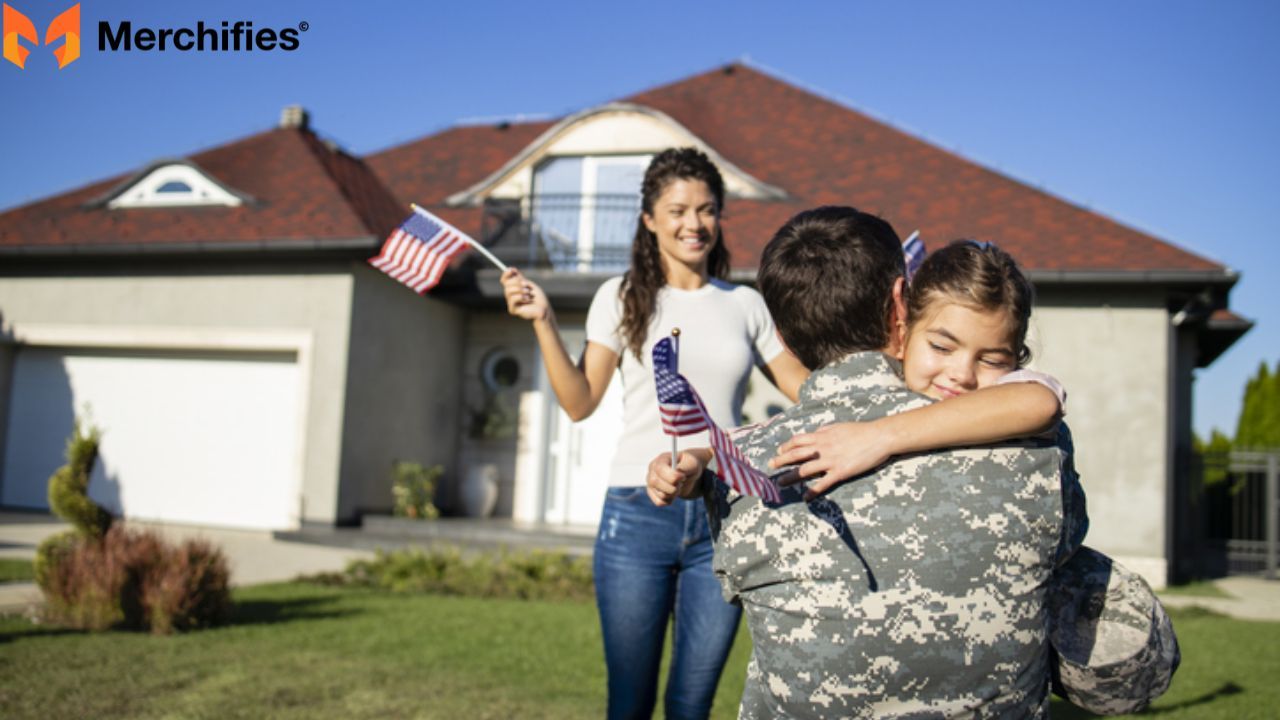
What is Stolen Valor?
Stolen valor means falsely claiming military service, ranks, or honors you didn't earn. The Stolen Valor Act made it illegal to fraudulently claim certain military honors.
But stolen valor extends beyond legal definitions. In veteran culture, it includes any false claim of service—whether or not there's legal prosecution.
Why does this matter intensely? Because military achievements represent experiences that shaped identity through hardship and sacrifice. When someone falsely claims those achievements, they're stealing the value veterans earned.
Symbols You Should NEVER Wear (Unless Earned)
- Rank insignia: Chevrons, bars, eagles claim specific authority in military hierarchy.
- Qualification badges: Airborne wings, Ranger tabs, CIB, Special Forces tabs claim training and skills.
- Award decorations: Purple Heart, Bronze Star, Silver Star, medals, ribbons claim specific recognition.
- Combat patches: Right shoulder position claims combat deployment experience.
- "Veteran" text: Claims military service you didn't perform.
Wearing these without earning them is stealing someone else's sacrifice and achievement.
Supportive Apparel That's Always Appropriate
Generic patriotic eagles: Non-military designs are always appropriate.
"Veteran Supporter" or "Military Family" shirts: Clearly indicate support, not claiming service.
Branch appreciation shirts: Without rank insignia or qualification badges are acceptable.
Memorial shirts: Honoring deceased veterans (special category below).
POW/MIA awareness apparel: Supports important cause without claiming service.
American flag designs: General patriotic imagery not specific to military.
Memorial Wear - Honoring Deceased Veterans
Family members often wear shirts featuring their deceased loved one's unit, rank, or symbols. This is generally accepted when clearly memorial:
- "In Memory Of [Name]"
- Dates of service or death
- "Forever in Our Hearts"
- "Gold Star Family" designation
A mother wearing her son's unit patch with "In Memory Of SGT John Smith" isn't claiming service—she's honoring her son's sacrifice.
How to Show Respect Without Stolen Valor
The fundamental principle: don't claim what you didn't earn.
Ask yourself: "Does this shirt claim I did something I didn't do?" If yes, don't wear it.
Choose designs that honor without imitating. A shirt saying "Thank You Veterans" honors service without claiming it. A shirt with Airborne wings and no clarifying text claims jump qualification you might not have.
When in doubt, ask a veteran. They'd rather answer questions beforehand than confront stolen valor afterward.
Most Common Symbols on Veteran Shirts
- Marine Corps EGA: Most common single symbol. Marines wear this more consistently than any other service.
- 101st Airborne Screaming Eagles: Eagle head with open beak. One of most deployed divisions in history.
- 82nd Airborne All American: Red and blue patch with "AA."
- Airborne wings: Silver wings with parachute. One of most recognized qualification badges.
- American bald eagle: Generic patriotic eagles on both veteran and supporter shirts.
- Branch seals: Official Army, Navy, Air Force, Marine Corps, Coast Guard seals.
- Combat Infantry Badge: Blue badge with rifle. Indicates infantry combat service.
- Ranger tab: Black and gold curved tab. Indicates Ranger School graduation.
- 1st Infantry Division: Red "1" on olive background. Combat history from WWI to present.
- Special Forces tab: Green and black tab. Indicates Green Beret service.
Color Meanings in Military Symbols
Branch Color Schemes
Army: Black and gold
Navy: Navy blue and gold
Air Force: Air Force blue and silver
Marines: Scarlet and gold (since 1925)
Coast Guard: Blue and white
Universal Color Meanings
Red/Scarlet: Valor, sacrifice, courage, blood shed
Gold/Yellow: Excellence, achievement, honor
Blue: Loyalty, vigilance, justice, sky/sea
Green: Military service, land forces
Black: Strength, determination, professionalism
White/Silver: Integrity, purity, peace
Purple: Exclusively Purple Heart (wounded in combat)
Colors aren't decorative—they carry meaning veterans understand from service.
Frequently Asked Questions
What does the eagle on veteran shirts mean?
The eagle represents freedom, leadership, national pride, strength, vigilance, and American military power. As the U.S. national emblem since 1782, it symbolizes the nation veterans defended.
Marine Corps eagles (in the EGA) represent the United States and air combat. They face right—unique among military eagles. Army eagles feature shields (loyalty) and olive branches (peacetime service) alongside arrows (wartime capability). Air Force eagles emphasize air striking power. Navy eagles combine maritime and aviation symbolism.
When you see an eagle, you're looking at the oath to defend America made visible.
What does EGA stand for?
EGA stands for "Eagle, Globe, and Anchor"—the Marine Corps emblem since 1868.
Eagle: Represents America and air combat, faces right (unique)
Globe: Shows worldwide expeditionary service ("every clime and place")
Anchor: Reflects naval heritage and amphibious warfare capability
Scarlet and gold are official Marine colors. Marines earn the EGA after completing the Crucible during boot camp. This earning process makes it sacred—someone wearing it without earning claims an identity and achievement they didn't earn through the hardest experience of Marines' lives.
What does a combat patch mean?
A combat patch (right shoulder) means the veteran deployed to a designated combat zone and served under hostile conditions. Officially called SSI-FWTS (Shoulder Sleeve Insignia-Former Wartime Service).
Left shoulder = current/last unit. Right shoulder = combat deployment unit.
Combat patches are never decorative. They represent combat deployment to Vietnam, Gulf War, Somalia, Bosnia, Kosovo, Afghanistan, Iraq, or other hostile areas. The specific patch shows which unit they deployed with.
Requires at least 30 consecutive days in combat zone or direct hostile engagement.
Why does the Marine eagle face right?
The Marine Corps eagle faces right as unique design distinguishing the EGA from other military eagles, which typically face left in heraldic tradition.
There's no official explanation, but it creates visual distinction Marines immediately recognize. It reinforces separate service identity and pride in being different. It's one detail making the EGA the most recognizable military emblem in American culture.
The direction has remained consistent since 1868, creating continuity across 150+ years. Some Marines joke the eagle faces right because "Marines are always right."
What are the most common symbols?
Most common include Marine Corps EGA, 101st Airborne Screaming Eagles, 82nd Airborne All American, Airborne wings, American eagles, branch seals, Combat Infantry Badge, Ranger tab, 1st Infantry Division Big Red One, and Special Forces tab.
The EGA appears more than any other single symbol due to intense Marine identity culture. The 101st and 82nd Airborne patches are among most recognizable Army patches due to extensive combat histories from D-Day through Afghanistan.
What do colors on patches mean?
Red/scarlet = valor and sacrifice Gold = excellence Blue = loyalty and vigilance Green = military service Black = strength White/silver = integrity Purple = Purple Heart only (wounded in combat)
Branch colors: Army (black and gold), Navy (navy blue and gold), Air Force (blue and silver), Marines (scarlet and gold), Coast Guard (blue and white).
When you see scarlet plus gold, that's Marine Corps. Navy blue plus gold indicates Naval service.
What's the difference between badge and patch?
Patches are fabric emblems on shoulders showing unit assignment (left) or combat service (right). Everyone in the same unit wears identical patches.
Badges are metal pins above the pocket showing individual qualifications earned through training or combat. Examples: Airborne wings, Ranger tabs, CIB.
Patches identify units you served with. Badges identify capabilities you earned individually.
Are military symbols official or commercial?
Both. Official symbols require licensing through military trademark programs—royalties support military quality-of-life programs. Commercial designs are military-inspired but don't replicate official insignia exactly.
Licensed products state "Officially Licensed," use exact official designs, and support military communities through royalties. They're more accurate and higher quality than generic military-style designs.
Many veterans prefer officially licensed apparel for accuracy and because royalties support military programs.
What does "Old Abe" mean on 101st shirts?
"Old Abe" was a Wisconsin War Eagle who served in the Civil War, flying into 42 battles with the 8th Wisconsin Volunteer Infantry (1861-1865). Named after Lincoln, he became the most famous military animal mascot.
When the Army formed the 101st Airborne in 1918, they chose an eagle patch honoring Old Abe. The eagle appears mid-flight with open beak, creating the "Screaming Eagles" image.
Veterans of the 101st wear Old Abe with pride. The symbol connects 160 years from Civil War mascot to current combat operations—from D-Day paratroopers to Afghanistan deployments.
Understanding the Stories Behind the Symbols
The next time you see a veteran wearing symbols, recognize what you're seeing. Those aren't decorations—they're visual autobiography of service, sacrifice, and earned pride.
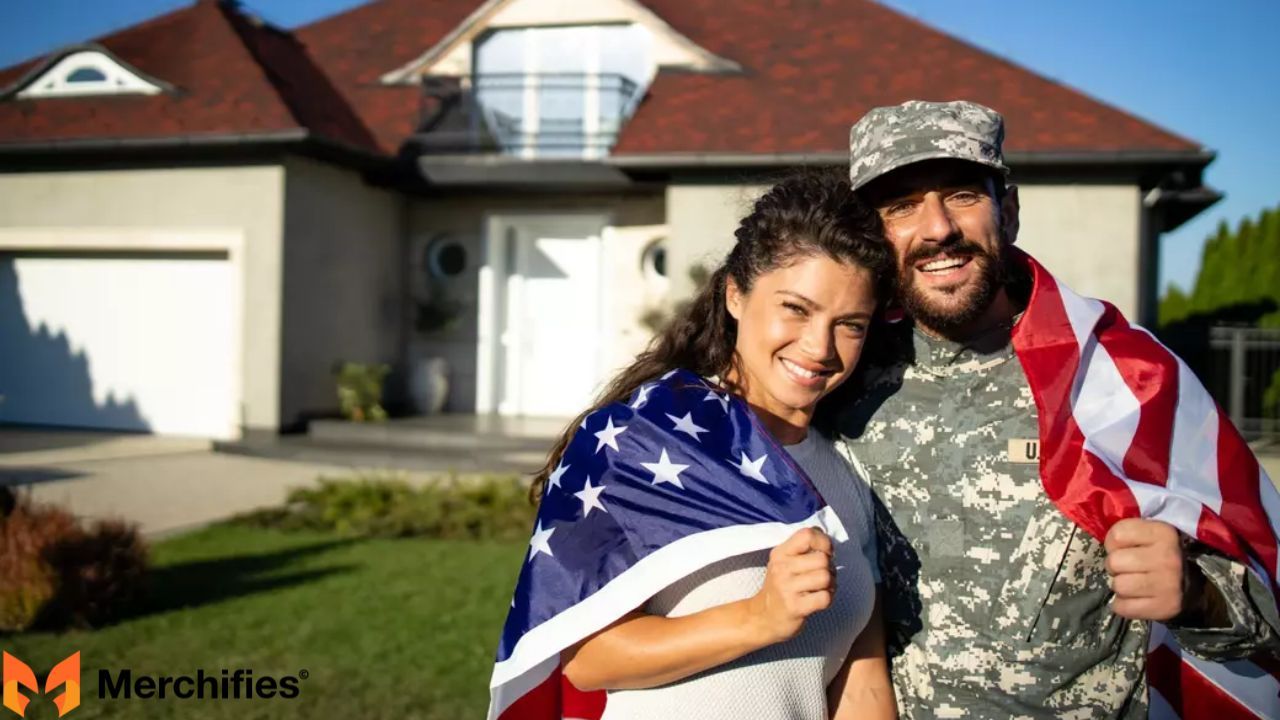
The eagle represents values they defended and the nation they served. The patches tell where they went and who they served with. The badges show what they accomplished under pressure.
If you want to understand a veteran's symbols, ask. Most veterans are proud to explain their patches and emblems. Just approach with genuine interest, not assumptions.
If you're considering wearing military symbols, remember: honor and support without claiming what you didn't earn. Choose designs that clearly indicate support rather than claiming service.
Whether you're a veteran understanding your own symbols, a family member decoding a loved one's story, or a civilian showing respect, understanding military symbolism opens a window into military culture. These symbols carry weight because they represent real accomplishments, real sacrifices, and real bonds forged under extraordinary circumstances.
The eagle isn't just an image. It's a promise kept, a mission accomplished, a reminder of what service means. The patches tell stories of units that became families. The badges prove capabilities that saved lives. The colors represent values that shaped character.
Behind every symbol is a story worth hearing. Behind every veteran shirt is a person who served something larger than themselves.